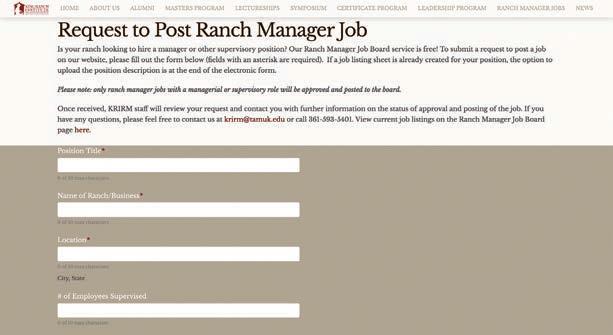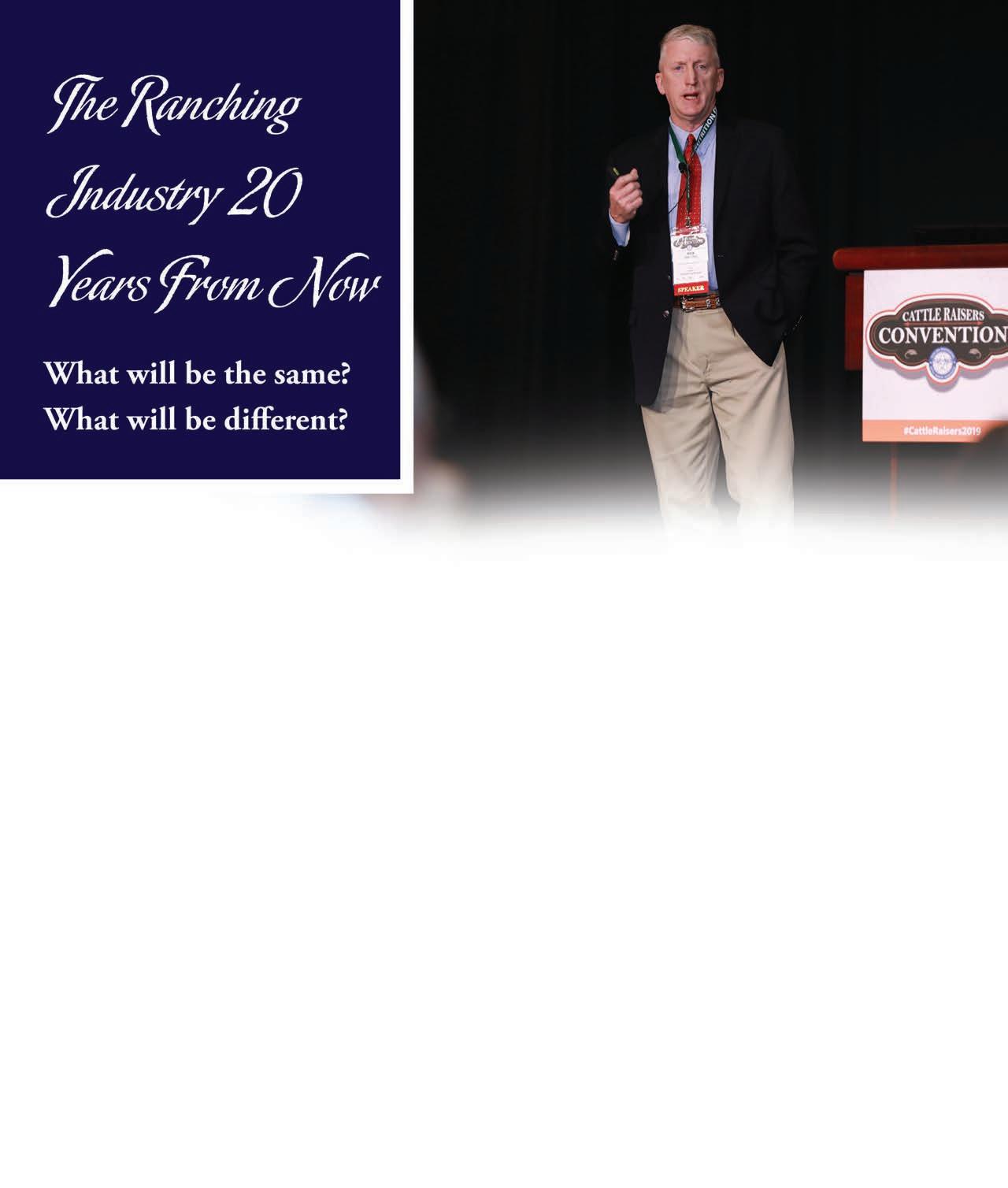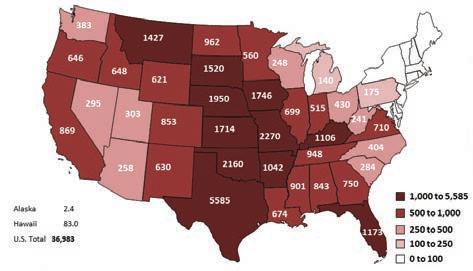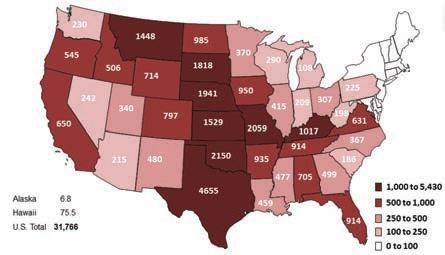
4 minute read
Ranch Manager Job Board
will be a powerful tool that brings the right kind of applicants to their organization. Through many avenues of recruitment such as job search websites, email chains, and placement services, Redman says those resources are either expensive or not always effective.
“Using job boards like Indeed and others, you end up getting a lot of unqualified applicants you have to sort through,” he says. “The KRIRM job board will draw the most qualified ranch management applicants.”
Advertisement
Redman is no stranger to the mission of the Institute. As a 2014 graduate of the ranch management master’s degree program, Redman knows that the job board will be the first site searched by the most qualified applicants because of the training and education mission of KRIRM.
“If a ranch wanted access to the best possible pool of candidates, they should post on the KRIRM job board. A person seeking a manager would have the best possible candidates all in one place,” he says.
Lee Creech, manager of Rocky Mountain Sire Service for Leachman Cattle of Colorado in Denver, Colo., makes the same observation on the excessive amount of jobs available online that do not necessarily fit a ranch manager role. Creech explains the frustration of sorting through unorganized and vague job descriptions on some job websites. Most of those job sites force individuals to commoditize applications, says Creech, to fit multiple job postings making it hard for an application to be specific to a certain job or to stand out among others.
Creech is excited for the new ranch manager job board with the Institute, explaining that historically there hasn’t been a place to look for high-caliber type jobs.
“I think the fact that the job postings are vetted lets a potential applicant know that it’s the real deal. The employer is interested in hiring the best and likely believes in the principles that KRIRM represents,” says Creech.
Not even two years ago, Creech was on the job search before graduating from KRIRM in 2017. For today’s candidates looking for a ranch manager job, Creech recommends the new ranch manager job board to find quality job listings.
“Why not start your search with a curated job board from the ones who know the industry the best with the place [KRIRM] that has connected the top ranches with the best managers for the past 15 years,” he advises. “No entity is better connected to the needs of large complex ranching operations.”
Employer Seeking a Manager
If you are a ranch owner or employer in search of a manager, there is currently no charge for this service. An electronic submission form was created for requests to post ranch managers jobs to the board. All submitted Continued on page 10
Visit our new Ranch Mangaer Job Board! krirm.tamuk.edu/ranch-manager-jobs/
“This job board is simply another opportunity that will help us further our service as we work to educate leaders in ranching and ensure our hard earned heritage is not lost.” -Clay Mathis, KRIRM Director

By: Ashley Patterson
What will the ranching industry look like in the year 2039? That question was raised during a presentation made at the 2019 Cattle Raisers Convention in Fort Worth, Texas, to kick off the School for Successful Ranching. In front of a crowded room of producers from across the country, King Ranch® Institute for Ranch Management (KRIRM) Paul C. Genho Endowed Chair in Ranch Management Rick Machen, PhD, and KRIRM Practitioner in Ranch Economics Stan Bevers considered five areas of interest to the ranching industry, the current situations in each area, and how a 20-year time lapse might shape the industry. These areas include: rural land, world population dynamics, climate change, the role of government, and beef production.
Rural Land
When it comes to rural land in the future, the questions will arise: Who owns the land? Who controls the land? What are their objectives in owning the land? In regards to present day, Bevers presented current land statistics in the US. According to the United Nations Food and Agriculture Organization, 70% of all US agricultural land is rangeland, which is best used as grazing land for ruminant animals.
The amount of rural land is shrinking while land values have risen significantly, increasing by $41 acre each year since 1972, explained Bevers. As the national cowherd numbers decreased since 1980, the cattle Rick Machen, PhD, presenting at the 2019 Cattle Raisers Convention (TSCRA photo). distribution shifted towards the Great Plains (Figures 1 and 2). This condensing of the cowherd toward the Great Plains will continue unless water availability becomes an issue.
Circling back to the questions of who will own the land 20 years from now, Bevers also noted that if today’s rancher (average age of 58.3 years in 2012) owns a portion of their land, in 20 years we could possibly see the greatest turnover of land ownership since settling the

Figure 1: Map illustrating number of beef cattle in the US in 1980.
West.
#’s represented by 1,000s

Figure 2: Map illustrating number of beef cattle in the US in 2019.

#’s represented by 1,000s

